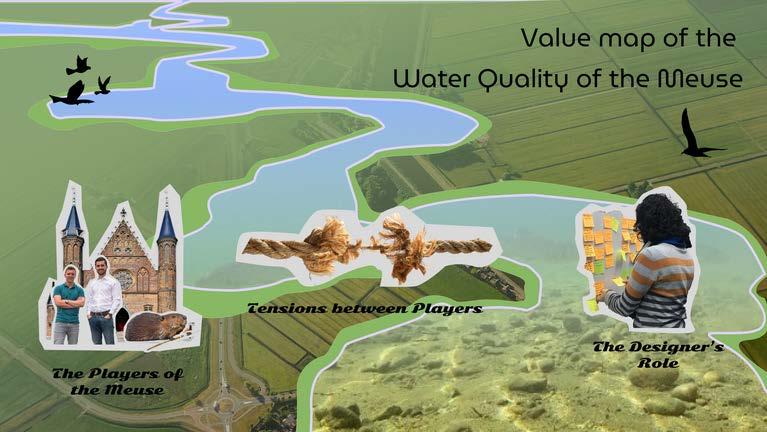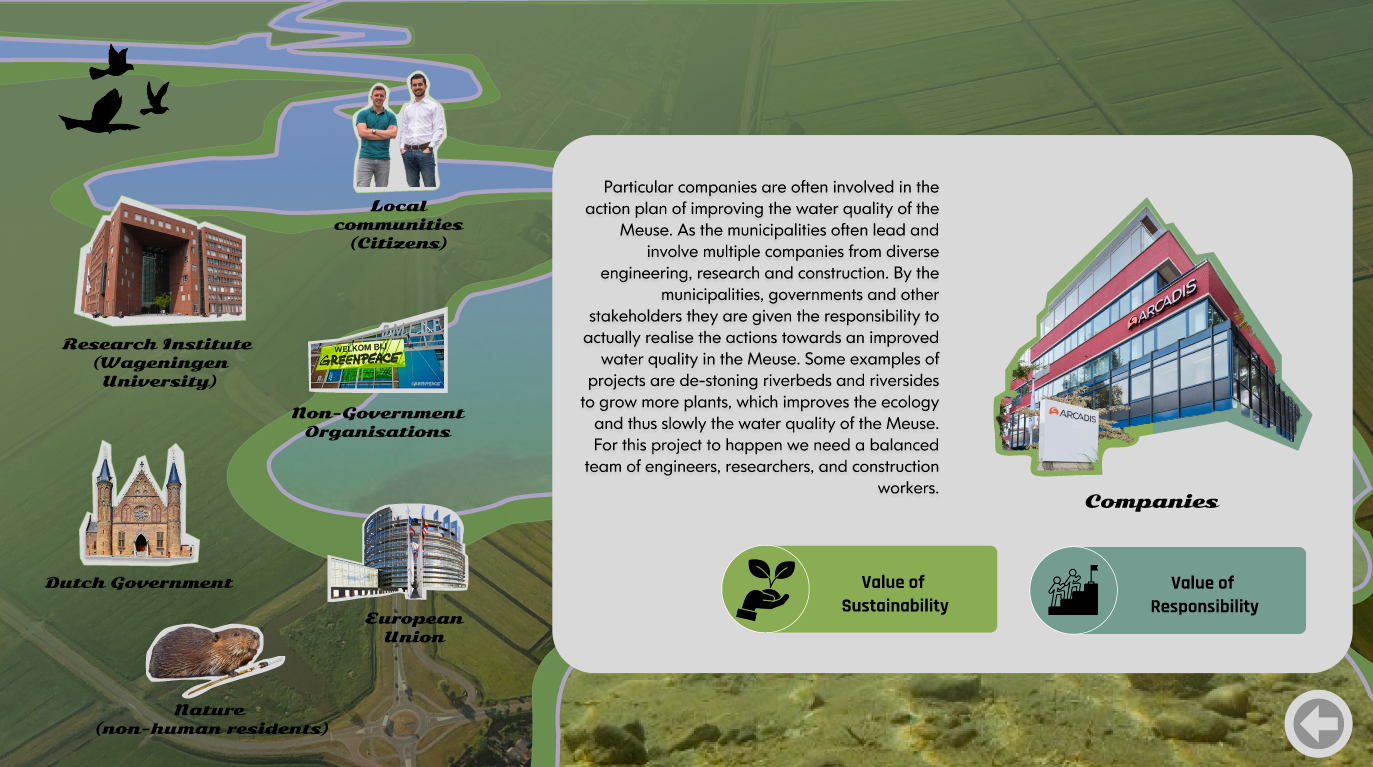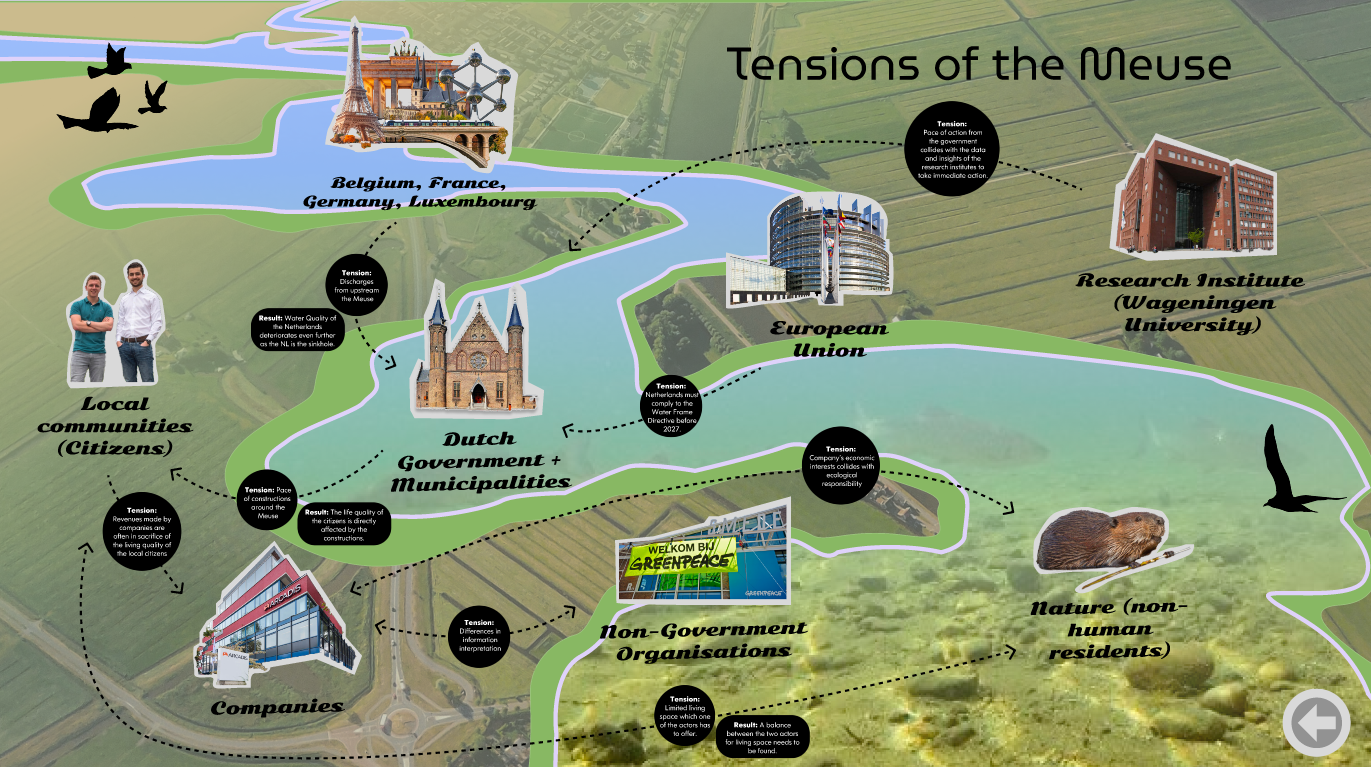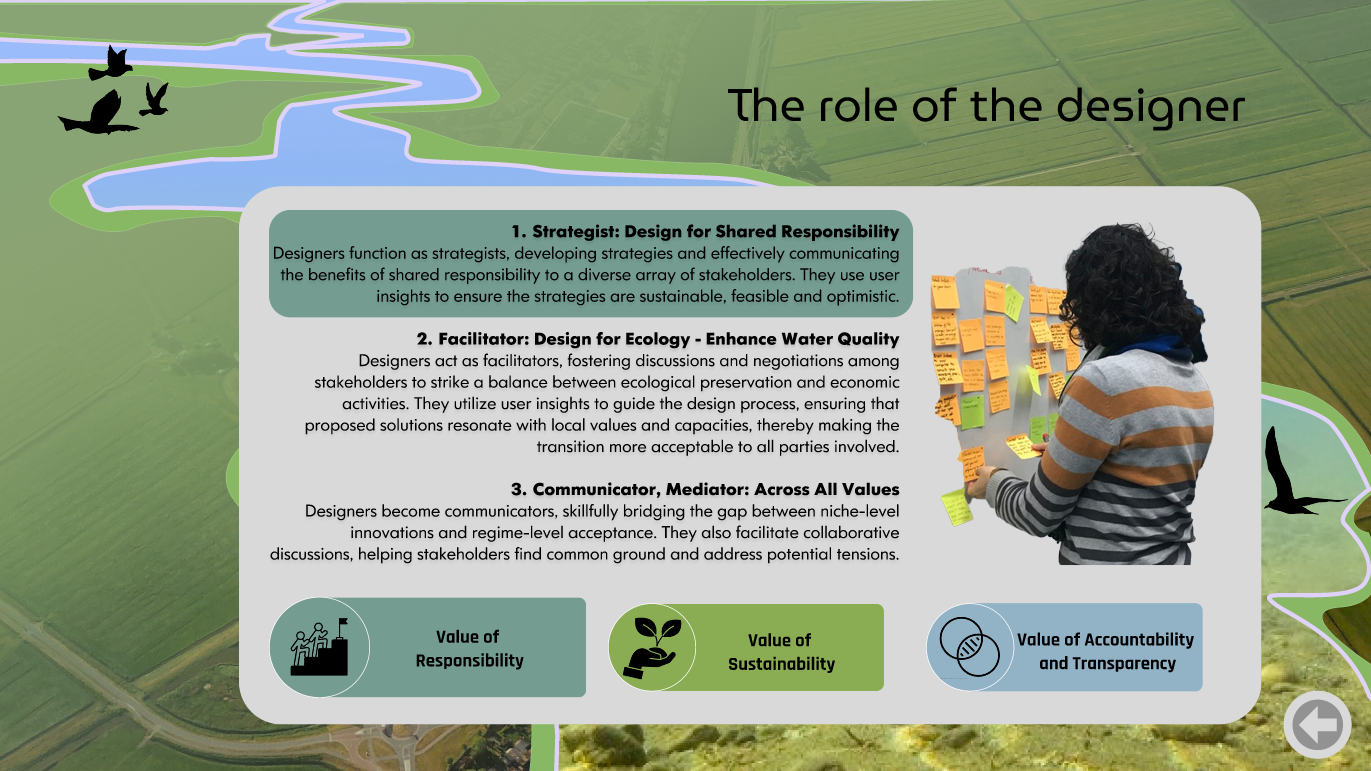Water quality of the Meuse





The River Meuse, also known as the Maas, is a major European river that flows through France, Belgium, and the Netherlands. The Meuse plays a crucial role in transportation, agriculture, and tourism throughout its course, contributing to economic development. The river faces water quality issues due to pollution from industrial discharges and agricultural run-off, prompting countries like the Netherlands to address and improve water quality through regulations and conservation initiatives.
Currently, several projects are and have been designed to improve the situation of the River Meuse. Various actors are involved in projects: government, NGOs, community Education, the association of water companies, research institutes, communities, and citizens.
The value map looks into this context through three different sections (fig. 1). “The players of the Meuse” which involves the stakeholders where each illuminates the values and interplay of interests among the participants engaged in the upkeep and enhancement of the Maas River (fig. 2). Further explanations can be shown when clicking on the values of the stakeholders (fig. 3). Secondly, the “Tensions of the Meuse” (fig. 4) shows the main tensions between the stakeholders who are involved in improving the water quality of the Meuse, with conflicts arising from the trade-off between revenue, sustainability, and quality of life. Finally the Designer’s role in order to improve the water quality of the Meuse (fig. 5).
Many stakeholders may not fully grasp their potential within this context. With the aid of this value map, all involved parties can unveil their roles and actively contribute to the formulation of fresh perspectives.
To help this process and to align different stakeholders Florence Kao, Shervin Tjon, Federico Villa identified three core values followed by related challenges that should be the focal point for Meuse in the future:
- Design for ecology with an emphasis on enhancing water quality
Shaping a sustainable future requires stakeholders to adopt a "Design for Ecology" mindset. The government and NGOs should promote collaborative discussions on the topic.
However, climate change is creating pressure on government authorities to accelerate sustainability efforts while economic sectors may require time to transition to eco-friendly practices.
- Design for shared responsibility
The Meuse River system requires shared responsibility for its long-term well-being. Pollution necessitates a shift towards stewardship, with stakeholders recognizing their responsibility to preserve the river.
However, research indicates that people are more willing to take environmental responsibility when they perceive the problem as real and the solutions as practical and effective.
- Design for crystal clear waters and information
Transparency and information clarity are crucial for sustainable Meuse River management. An open platform is needed to reveal data sources and motivations, encourage real-time data contributions, and evolve to offer deeper insights.
However, effective information management requires advanced technology, operational stability, expert curation, and transparency for effective water quality management, to facilitate informed decision-making and accessibility for stakeholders.
The mentioned challenges make the individuated value hard to translate innovative pockets into actual sustainable practices, with the collaboration and consensus among diverse stakeholders. Here the designer can play an important role in value transition:
- Facilitator (Design for ecology - enhancing water quality)
Designers can facilitate stakeholder discussions, balancing ecological preservation and economic activities, using user insights to ensure solutions align with local values and capacities.
- Strategist (Design for shared responsibility)
Designers can function as strategists who create sustainable, feasible, and optimistic strategies by utilizing user insights to effectively communicate the benefits of shared responsibility to various stakeholders.
- Communicator, mediator (across all values)
Designers can effectively communicate, bridging the gap between niche innovations and regime acceptance, and facilitating collaborative discussions to help stakeholders find common ground and address potential tensions.
